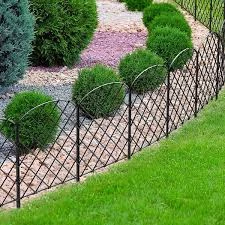Gabion and Riprap Essential Elements in Erosion Control and Landscape Architecture
Erosion is a natural phenomenon that can cause significant damage to landscapes and property, particularly in areas prone to heavy rainfall or flooding. As urban development expands and environmental challenges become more pronounced, innovative solutions are essential to protect both natural and built environments. Two effective methods for controlling erosion are the use of gabions and riprap. Although they serve similar purposes, their applications, construction, and benefits differ, making them valuable tools in landscape architecture and civil engineering.
Gabions A Structural Solution
Gabions are wire mesh cages filled with rocks, stones, or other materials. They are often used in areas where soil erosion is a concern, particularly along riverbanks, hillsides, and other vulnerable terrains. The primary purpose of gabions is to stabilize soil and prevent erosion by absorbing and deflecting the force of moving water. Their modular nature allows for flexibility in design and size, catering to various site conditions.
One of the advantages of gabions is their permeability. Unlike solid barriers, gabions allow water to flow through, reducing the pressure exerted on the structure during heavy rainfall or flooding. This characteristic helps prevent the buildup of water, which can lead to structural failure in traditional retaining walls. Gabions also support vegetation growth, providing a habitat for plants that further anchor the soil, enhancing the ecological value of the area.
Additionally, gabions are an environmentally friendly option. The use of natural stone minimizes the ecological footprint, and the designs can blend seamlessly into the landscape. Many landscape architects appreciate gabion walls for their aesthetic versatility, as they can be constructed to complement surrounding natural features or even serve as decorative elements in parks and public spaces.
Riprap A Robust Defense
gabion and riprap

Riprap, on the other hand, consists of large, loose stones placed along shorelines, riverbanks, and other locations to protect against erosion caused by water flow. This method is commonly employed in situations where soil stability is challenged by wave action or swift currents. The primary function of riprap is to absorb and dissipate the energy of flowing water, preventing erosion and maintaining the integrity of the underlying soil.
One of the key benefits of riprap is its durability. The large stones used in riprap can withstand extreme weather conditions and high water flow, making it a suitable choice for high-impact areas. Unlike gabions, riprap requires minimal maintenance once installed, as the stones naturally interlock and settle into place. However, ensuring proper placement and sizing of the stones is crucial to the effectiveness of a riprap installation.
Riprap can also enhance the visual appeal of a landscape. When designed thoughtfully, riprap installations can mimic natural rock formations, contributing to a more organic appearance. Landscape architects often incorporate riprap in designs for parks, waterfronts, and other recreational areas, blending functionality with aesthetics.
Comparing Gabions and Riprap
While gabions and riprap share a common goal of erosion control, the choice between them depends on several factors, including site conditions, the extent of erosion, and aesthetic considerations. Gabions are often preferred in scenarios where flexibility and vegetation support are essential, while riprap is typically selected for its strength and durability in high-energy environments.
Both gabions and riprap provide effective solutions for managing erosion and protecting landscapes. As climate change and urbanization continue to put pressure on natural systems, the importance of such erosion control methods will only grow. Integrating these practices into landscape architecture not only safeguards the environment but also enhances the beauty and functionality of outdoor spaces.
In conclusion, gabions and riprap are indispensable tools in the fight against erosion. Their unique characteristics and benefits make them suitable for a variety of applications. As we move forward, understanding and implementing these solutions will be critical in preserving our landscapes and ensuring the sustainability of our built environments. Through thoughtful design and strategic planning, landscape architects and engineers can create resilient, attractive spaces that harmonize with nature while safeguarding against erosion.
















